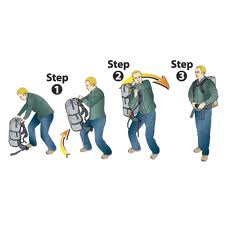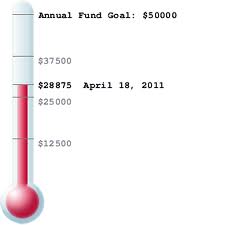 Putting your nonprofit organization’s resource development plan together can be a monumental undertaking. If you do it in an engaging and collaborative manner, then you are likely temporarily expanding your resource development committee and inviting various stakeholders (e.g. event volunteers, foundation staff or board members, and donors) to come to the table. This could easily result in 8 to 16 volunteers jockeying for position around your planning table.
Putting your nonprofit organization’s resource development plan together can be a monumental undertaking. If you do it in an engaging and collaborative manner, then you are likely temporarily expanding your resource development committee and inviting various stakeholders (e.g. event volunteers, foundation staff or board members, and donors) to come to the table. This could easily result in 8 to 16 volunteers jockeying for position around your planning table.
I have used this approach before. Yes, we experienced challenges such as:
- getting everyone’s calendars aligned,
- communicating effectively and trying to avoid crazy, overlapping, and confusing long email threads,
- keeping track of action items (not to mention injecting accountability into the process),
- collaboratively working on building one document that didn’t result in 20 different versions attached to countless different email threads, and
- sharing files with each other (Note: “the cloud” did not yet exist at the time of the project I am referencing).
A few months ago, a very dear friend and fellow consultant — Teri Halliday — introduced me to an online product called “Basecamp“. She swears by it, and I trust her like I trust my mother. So, I purchased the service and it changed my life! (Yes, dramatic but very true) There isn’t a week that goes by where I don’t think back to the resource development planning process that I described a few paragraphs ago and wonder how different things would’ve been if I would’ve had access to Basecamp.
 All of the challenges I described in the previous set of bullet points would’ve disappeared. Once everyone registers and links to your online workspace, you can:
All of the challenges I described in the previous set of bullet points would’ve disappeared. Once everyone registers and links to your online workspace, you can:
- work on collaboratively building documents in the Writeboard section,
- keep everyone’s schedules in lock step with the Calendar section,
- communicate with each other using the bulletin board functionality in the Messages section,
- keep track of action items using the To-Do section (and OMG the system even reminds people their tasks are coming due), and
- share documents using the Files section.
It is true that people who don’t want to be engaged won’t get any more involved in a project just because you’re utilizing an online project management tool. When you see this dynamic at play, your problem isn’t that you’re disorganized . . . you have a recruitment problem!
 However, I cannot tell you how many times I’ve seen well-intentioned volunteers who want to be involved just walk away from a project because it is disorganized and hard to collaborate with other volunteers. It is this problem that Basecamp can help you resolve.
However, I cannot tell you how many times I’ve seen well-intentioned volunteers who want to be involved just walk away from a project because it is disorganized and hard to collaborate with other volunteers. It is this problem that Basecamp can help you resolve.
OK . . . I must admit that I am in LOVE with Basecamp. I am like a man with a hammer, and now I see nails everywhere! 🙂 I can see busy families utilizing Basecamp. I can see for-profit companies who operate in offices sprinkled across the country utilizing Basecamp. I obviously see the benefits for non-profit organizations who constantly engage busy employees and volunteers on a multitude of projects (e.g. strategic planning, resource development planning, special event fundraisers, annual campaigns, etc).
 While I wish I could say that this “Software as a Service” (SaaS) was free, I cannot say such a thing; however, I think it is reasonably priced with one plan costing just $20 per month (and no long-term contract to sign).
While I wish I could say that this “Software as a Service” (SaaS) was free, I cannot say such a thing; however, I think it is reasonably priced with one plan costing just $20 per month (and no long-term contract to sign).
I am sure some of you are wondering what has gotten into me this morning . . . am I a paid spokesperson or something like that? No! No! No! I am just a huge fan of things that work, and I have worked in the non-profit sector long enough to know that a tool like this can be a godsend. I say every day on this blog that “we can all learn from each other” . . . so I decided to put my money where my mouth is today.
What other tools (either free or paid service) has your non-profit agency used to help organize your volunteers and projects (e.g. Doodle.com? Google docs? GoToMeeting? BigMarker? Microsoft Project?)??? Please take a moment to scroll down and share your ideas via the comment box.
Here’s to your health!
Erik Anderson
Founder & President, The Healthy Non-Profit LLC
www.thehealthynonprofit.com
erik@thehealthynonprofit.com
http://twitter.com/#!/eanderson847
http://www.facebook.com/eanderson847
http://www.linkedin.com/in/erikanderson847
























